I figured that Hail Columbia could have been an anthem for the North.National Anthems in TL-191 part 4
Bonnie Blue Flag [Confederate States of America]
Dixie's Land [Confederate States of America]
God Save the South [Confederate States of America]
The Star-Spangled Banner [United States of America]
La Dessalinienne [Republic of Haiti]
You are using an out of date browser. It may not display this or other websites correctly.
You should upgrade or use an alternative browser.
You should upgrade or use an alternative browser.
Photos from Featherston's Confederacy/ TL-191
- Thread starter Alternatehistoryguy47
- Start date
-
- Tags
- the rising sun
I figured that Hail Columbia could have been an anthem for the North.
I just read about the history of the U.S. anthem.
Dang. I knew it was a matter of time before I missed an important historical detail.
To be fair, I included multiple anthems for the CSA, since there were more than one that were competing for popularity among the Confederates.
I'll add Hail Columbia and others soon.
UPDATE: I added them in part 5. Note, I did not include My Country 'Tis of Thee because it would probably be avoided due to its similar melody to "God Save the Queen". As for "America the Beautiful", it probably wouldn't have been made during the 1890's with the same circumstances in TL-191. However, it is not impossible for some resemblance of the song to appear in some way.
Last edited:
@Alterwright. @Joshua Ben Ari...
Could the Confederacy have built an church, or some other colony in Israel? Historically, you have places like the American Colony and Church of Mary Magdalene, as well as various other locations, places, and churches built and controlled by Europeans. (Such as joint-Anglican-Lutheran bishopric within Jerusalem in the 1840s. The First Protestant Church in the Middle East, the Christ Church in 1849. St. Anne by France in 1860. The Austrian Hospice in the same year. The Ecce Homo Convent. The Garden Tomb and Ethiopian Church. Prince Albert Edward visited visited Jerusalem as part of a five-month tour of Egypt and the Ottoman empire.)
American Presbyterians focus on Beirut.
Given the South's being the Bible Belt, I can see them serious trying to do some project within the Holy Land with the British.
Also know you have an Church of All Nations with both Union and Confederate Coat of Arms.
I'm sure they'd want to, but I'm not sure they would have a church colony in Israel like the American Colony. Maybe some missionary work or local missionary-sponsored hospitals, but not a church colony. I don't think the Ottomans would take too kindly to the Confederates in Eretz-Yisrael/Palestine doing any kind of work, especially when the Americans and the Germans become allies, and the Germans and Ottomans had solid links since 1889 with the Orient Express running through Istanbul.
A Confederate colony within lands of the Ottoman Empire? Probably not very likely to me at least.
However, if what you're really talking about is religious missionary work done by Confederate priests, then yes, I'd say that's more likely. I actually talk about this too in another thread about Confederate concessions and treaty ports in China (not colonies). It is very likely to me that after the Second Mexican War, with an era of "good feelings" being very prevalent in the Confederacy, individuals would be more open to spreading the gospel and preaching abroad, much like how other European countries were doing the same thing as they were colonizing areas of the world. I'm not sure about the Middle East really, so I can't say. I don't know enough about that to comment. I can only say that missionary work in China done by Confederate priests would be very likely, often going to British ports (or Confederate ones idk) and going about their work from there.
I'm sure they'd want to, but I'm not sure they would have a church colony in Israel like the American Colony. Maybe some missionary work or local missionary-sponsored hospitals, but not a church colony. I don't think the Ottomans would take too kindly to the Confederates in Eretz-Yisrael/Palestine doing any kind of work, especially when the Americans and the Germans become allies, and the Germans and Ottomans had solid links since 1889 with the Orient Express running through Istanbul.
The history behind the rekindle of interest in the Holy Land and the flood behind Americans and Europeans into it is very interesting. If the Turks let the Russians build the Church of Mary Magdalene in 1888, I doubt see why the Confederates won't have an chance to build something in Jerusalem, or outside the Old City, or any other biblical site in Israel. At the very least, you see the South try and carry out various missionary projects and bible scholars and archaeologists.
However, it would be interesting to see the Union doing their own projects all the same in the Holy Land. (Such as joint-churches with the Germans and with the Austrians.) It seem much more likely the North would have the lion's share of time in Palestine.
Its been a while since I've posted here, but now I'm back!
Here is a map I made of the world of Timeline 191 in the year of 2015. Its based on David Bar Elias' excellent After the End story, with some minor changes and ideas of my own.

Here is a map I made of the world of Timeline 191 in the year of 2015. Its based on David Bar Elias' excellent After the End story, with some minor changes and ideas of my own.
Last edited:
Between the War of Secession, the Second Mexican War and leading up the First Great War, both the Union and the Confederacy would have their inserts peak into the Holy Land. From Union Jews and Confederate Christian missionaries to tourists and artists to bible scholars and archaeologists, all found their way to Palestine. From relics of the Canaanites, Egyptians, and Israelite, to Greco-Roman, Muslim, and Crusader, each tried to outdo the other in want could be found.
Following the Great War, Confederate activity in the Holy Land dropped to deal with the Post-War matters.
Church of the Redeemer 1900. The second Protestant church in Jerusalem and built between 1892 to 1898, in an show of German-American relations, the church was made an joint mission between German and American Lutheran Churches.

The Theodotus Inscription. Discover by Union archaeologists in 1913, the inscription mentions a priest by the name of Theodotus ( “god gave” in Greek.) who established a synagogue in Jerusalem from the 1st century BC. This gives gives one a peek into the nature of a Second Temple synagogue.
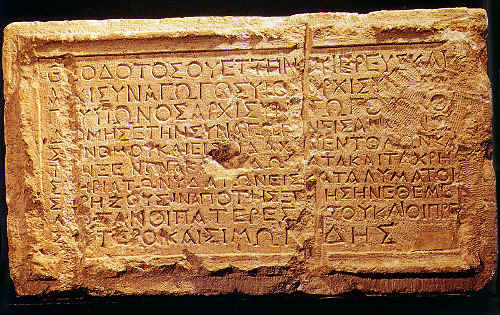
New Faith Baptist Chapel. The first Confederate church built in the Galilee, it is an modest building (When compare to later, much larger buildings.) with stained glass widows of Christ and Confederate and Southerner war heroes.
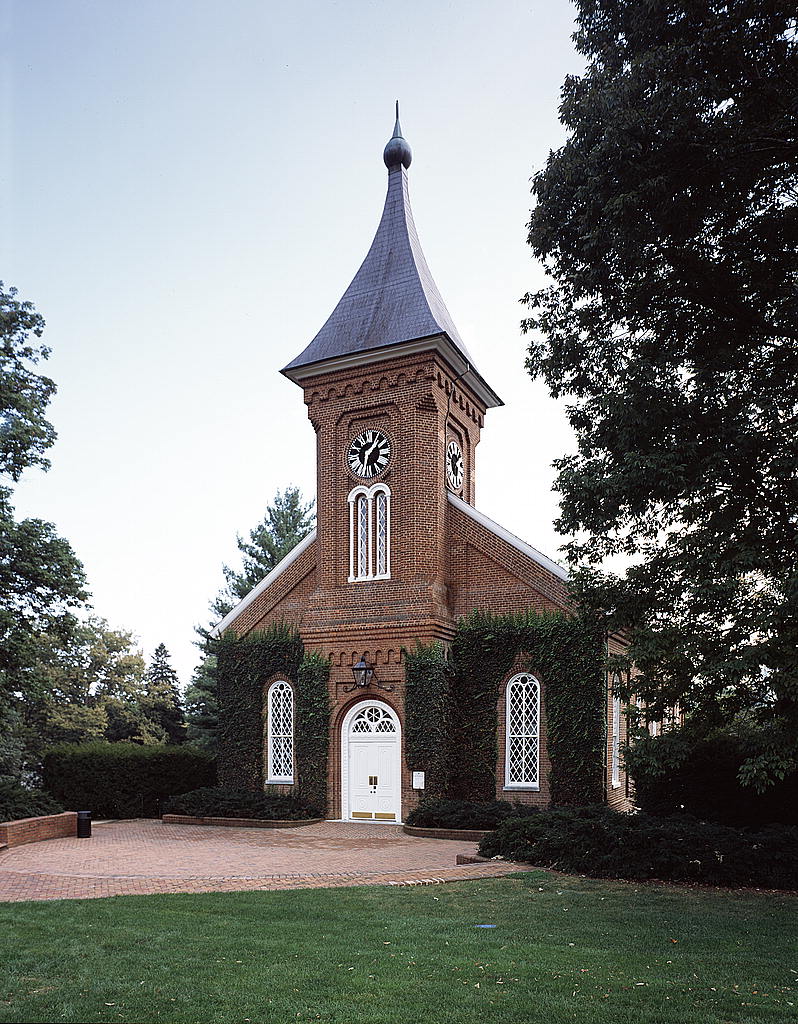
Following the Great War, Confederate activity in the Holy Land dropped to deal with the Post-War matters.
Church of the Redeemer 1900. The second Protestant church in Jerusalem and built between 1892 to 1898, in an show of German-American relations, the church was made an joint mission between German and American Lutheran Churches.

The Theodotus Inscription. Discover by Union archaeologists in 1913, the inscription mentions a priest by the name of Theodotus ( “god gave” in Greek.) who established a synagogue in Jerusalem from the 1st century BC. This gives gives one a peek into the nature of a Second Temple synagogue.

New Faith Baptist Chapel. The first Confederate church built in the Galilee, it is an modest building (When compare to later, much larger buildings.) with stained glass widows of Christ and Confederate and Southerner war heroes.

Last edited:
A Confederate colony within lands of the Ottoman Empire? Probably not very likely to me at least.
However, if what you're really talking about is religious missionary work done by Confederate priests, then yes, I'd say that's more likely. I actually talk about this too in another thread about Confederate concessions and treaty ports in China (not colonies). It is very likely to me that after the Second Mexican War, with an era of "good feelings" being very prevalent in the Confederacy, individuals would be more open to spreading the gospel and preaching abroad, much like how other European countries were doing the same thing as they were colonizing areas of the world. I'm not sure about the Middle East really, so I can't say. I don't know enough about that to comment. I can only say that missionary work in China done by Confederate priests would be very likely, often going to British ports (or Confederate ones idk) and going about their work from there.
This is something that I've always wondered, too.
For example, I found it unusual and a huge miss of an opportunity that both the official author Harry Turtledove and fan-writer David bar Elias didn't even mention the role and state of religion (from all types) in TL-191, before and after the end. Perhaps it was not mentioned due to ignorance or a lack of interest on the subject?
In general, there probably were attempts by Confederate preachers and pastors involved in missionary work. It would mostly be in favor of Protestant Christianity, with a few other different types of Christianity. It be curious if there were other denominations that popped into existence inside the Confederacy only. Also, there could have probably have been a decent Confederate Jewish community within the CSA and in Palestine.
Its been a while since I've posted here, but now I'm back!
Here is a map I made of the world of Timeline 191 in the year of 2015. Its based on David Bar Elias' excellent After the End story, with some minor changes and ideas of my own.
View attachment 444431
It is at this point that I must ask the question:
Zoidberg12, Where did you get this?
I have been looking for the original, colorless template for a while now. Even when I find a decent 1862, 1882, 1914, 1941, or 1944 version, I still keep finding some general border mistakes that prevent me from using it. Apparently, both the departments of Imperial Mexico and states of the CSA are hit and miss when I find a map that's already made. Would it be possible to direct me to the original blank, preferably with the CSA already drawn and or the Mexican departments/states already drawn, too, please?
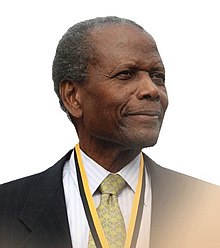
Sydney Poitier, President of the Federal Union of the Caribbean (1990-1998). Founded in the aftermath of GWII, the FUC was formed out of the former British island colonies in the Caribbean, as well as Haiti, as a potential 'land of safety' for any survivors of the Black Holocaust who did not wish to remain in the United States. The nation is a stalwart ally of the United States, and has become a true 'rainbow nation' - while many white colonials left for Britain following the war, some remained, along with substantial Indian and Chinese populations, all of whom have fused to create a truly unique culture.

Federal troops arresting a potential Neo-Confederate in Little Rock, Alabama, c. 1957, a year into the 'Years of Lead'. Following GW2, the 'Old Confederacy'* would remain under military occupation for decades to come, with frequent violence from Neo-Confederate groups. However, the Neo-Confederates - divided as they were between neo-Freedomites and 'True Confederate' groups who blamed Jake Featherston for the fall of the CSA - were unable to form a truly united front against the Federal government.

Early homosexual-rights activists c. 1960. During the 1960s, Socialist legislators and activists would move to champion this cause, seeing it as an issue of basic human rights. Ultimately, President McCarthy would sign legislation ending anti-homosexual legislation across the states in 1968 during his first term in office, while 1972 would see the passage of the 'Monogamous Cohabitation Rights Bill', under which same-sex couples who could prove cohabitation for a period of one year would be registered as 'cohabiting partners', and thus entitled to a number of the same rights as married couples. In addition, anti-discrimination legislation would be expanded to include homosexuals. While these measures would face resistance from conservative elements, the lack of representation by the highly conservative Southern states would see both laws passed. Full marriage rights were accorded to same-sex couples in 1990.
I second this. I could really use those basemaps.I have been looking for the original, colorless template for a while now. Even when I find a decent 1862, 1882, 1914, 1941, or 1944 version, I still keep finding some general border mistakes that prevent me from using it. Apparently, both the departments of Imperial Mexico and states of the CSA are hit and miss when I find a map that's already made. Would it be possible to direct me to the original blank, preferably with the CSA already drawn and or the Mexican departments/states already drawn, too, please?
Zoidberg12, Where did you get this?
I have been looking for the original, colorless template for a while now. Even when I find a decent 1862, 1882, 1914, 1941, or 1944 version, I still keep finding some general border mistakes that prevent me from using it. Apparently, both the departments of Imperial Mexico and states of the CSA are hit and miss when I find a map that's already made. Would it be possible to direct me to the original blank, preferably with the CSA already drawn and or the Mexican departments/states already drawn, too, please?
I've made maps of the TL-191 world in 1914, 1925, 1941 and 1944. If you want to use them, the links to these maps are below, although I'm not sure if they'll show the borders of Mexico you're looking for.
https://www.alternatehistory.com/forum/threads/ziodbergs-alternate-history-media-thread.296219/
https://www.alternatehistory.com/forum/threads/tl-191-map-thread.251639/page-19#post-7498503
If you want to make a map of Timeline 191 in the 19th century, some of these maps could help;
https://www.alternatehistory.com/wiki/doku.php?id=resources:1776-1900_map_dump
This reminds me a bit of something I'm working on. Mostly because of one of the key figures being physically modelled off of Sydney Poitier.
Sydney Poitier, President of the Federal Union of the Caribbean (1990-1998).

Federal troops arresting a potential Neo-Confederate in Little Rock, Alabama, c. 1957, a year into the 'Years of Lead'. Following GW2, the 'Old Confederacy'* would remain under military occupation for decades to come, with frequent violence from Neo-Confederate groups. However, the Neo-Confederates - divided as they were between neo-Freedomites and 'True Confederate' groups who blamed Jake Featherston for the fall of the CSA - were unable to form a truly united front against the Federal government.
This is pretty much like my own idea of people in the South, not wanting to blame its military heroes like Patton, so the civilian government like Featherston are the scapegoats for the Confederacy defeat to many. (Much as it was in OTL 1865. No one dared blame Robert E. Lee, or Longstreet, so they all blame Jeff Davis and the Richmond Government.)
Neo-Freedomites would largely be base in the Deep South while most of the 'True Confederate' would be up in the Upper South.
Pyotr Zatraev: Hero of Russia
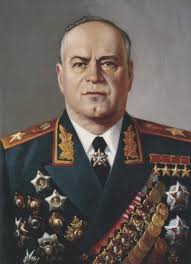
State Portrait of Zatraev, painted approx. 1955
After the First World War, Russia was in a sorry state. Even after the Tsar regained the throne, the damage had been done. During the Second Great War, Russia suffered from heavily dated equipment, lack of good officers (Zhukov being a notable exception), Harsh Laws making resentment worse, and increased reliance on foreign technology made the Russian Empire look weak. When the Second Great War began, The Russian Army proved to be some of the worse the entente had to offer. While winning a few of the opening battles against German Puppets in the east (Barely, these opening victories were highly exaggerated), the moment they met German Defensive lines, the Russians began to consistently lose battles against the German Empire, leaving the Entente's "Hammer and Anvil" Strategy in the dust. Not long after the Superbombing of Petrograd and the surrender of Russia, the old Empire collapsed into a Second Civil War, with Warlords claiming large swathes of land as their own personal fiefs, as well as the Bolsheviks making a re-appearance after the seeming destruction of its leadership. However, the war was remembered as being brought to a swift end by one of the Veterans of the Eastern Front: Marshal Pyotr Zatraev.
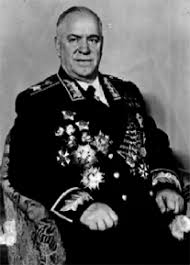
The Second Civil War would end in 1952, after 7 bloody years of fighting, with Zatraev's White Army, and some help from Germany, successfully defeating the revolters. After retaking Russia, he would establish what was known as the "Russian Republic." However, Russia would not see Democracy for another 20 years. Zatraev would take full control and install a total dictatorship, implementing what he called the "Five-Year Plan" to modernize Russia and bring it up to Western Standards. While these programs were successful on many levels, turning Russia from an Agrarian Monarchy to a Modern Industrial State, the programs also sought to remove any potential "Reactionary Elements." Prison Camps would be set up, many of them previously used by the Tsarist Regime, and would be used to "Contain Reactionary Elements."

Propaganda Poster
Eventually, Russia would enter the 60s. It would be here that Zatraev would focus on the Future of Russia: The Youths. Zatraev launched multiple projects to indoctrinate the youths of Russia into becoming proper citizens, holding rallies and encouraging them to act out "In the name of Progress and Russia." Another major event that occured during the Russian 60s was the Russo-Japanese War. Since the end of the SGW, Japan had expanded into Former Russian Territory, and had made multiple claims on disputed territories in the far east, bringing inevitable conflict between the two nations.
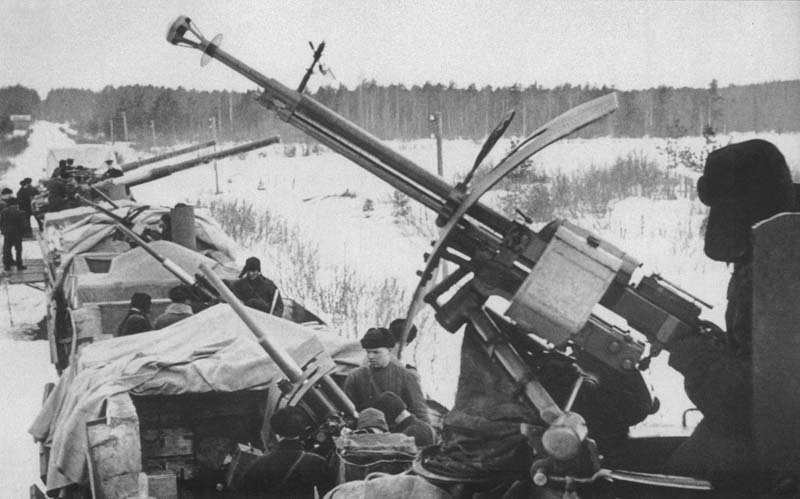
Photo from the Russo-Japanese War
Zatraev would pass away in 1976 at age 79, which led to a mild succession crisis. Initially, his successor would be his Deputy: Georgy Tarkov, who would later be overthrown by an Army Coup only a year later, with another leader: Leonid Brezhnev, taking over and finally allowing Democratic elections to take place.
Today, Zatraev is a mixed figure around the world. In Russia, he is remembered quite fondly, but other parts of the world see him as a sociopathic dictator who dragged Russia into the 20th century Kicking and Screaming, but there is no denying that Zatraev is one of the shapers of the mid 20th Century.
State Portrait of Zatraev, painted approx. 1955
After the First World War, Russia was in a sorry state. Even after the Tsar regained the throne, the damage had been done. During the Second Great War, Russia suffered from heavily dated equipment, lack of good officers (Zhukov being a notable exception), Harsh Laws making resentment worse, and increased reliance on foreign technology made the Russian Empire look weak. When the Second Great War began, The Russian Army proved to be some of the worse the entente had to offer. While winning a few of the opening battles against German Puppets in the east (Barely, these opening victories were highly exaggerated), the moment they met German Defensive lines, the Russians began to consistently lose battles against the German Empire, leaving the Entente's "Hammer and Anvil" Strategy in the dust. Not long after the Superbombing of Petrograd and the surrender of Russia, the old Empire collapsed into a Second Civil War, with Warlords claiming large swathes of land as their own personal fiefs, as well as the Bolsheviks making a re-appearance after the seeming destruction of its leadership. However, the war was remembered as being brought to a swift end by one of the Veterans of the Eastern Front: Marshal Pyotr Zatraev.
The Second Civil War would end in 1952, after 7 bloody years of fighting, with Zatraev's White Army, and some help from Germany, successfully defeating the revolters. After retaking Russia, he would establish what was known as the "Russian Republic." However, Russia would not see Democracy for another 20 years. Zatraev would take full control and install a total dictatorship, implementing what he called the "Five-Year Plan" to modernize Russia and bring it up to Western Standards. While these programs were successful on many levels, turning Russia from an Agrarian Monarchy to a Modern Industrial State, the programs also sought to remove any potential "Reactionary Elements." Prison Camps would be set up, many of them previously used by the Tsarist Regime, and would be used to "Contain Reactionary Elements."

Propaganda Poster
Eventually, Russia would enter the 60s. It would be here that Zatraev would focus on the Future of Russia: The Youths. Zatraev launched multiple projects to indoctrinate the youths of Russia into becoming proper citizens, holding rallies and encouraging them to act out "In the name of Progress and Russia." Another major event that occured during the Russian 60s was the Russo-Japanese War. Since the end of the SGW, Japan had expanded into Former Russian Territory, and had made multiple claims on disputed territories in the far east, bringing inevitable conflict between the two nations.

Photo from the Russo-Japanese War
Zatraev would pass away in 1976 at age 79, which led to a mild succession crisis. Initially, his successor would be his Deputy: Georgy Tarkov, who would later be overthrown by an Army Coup only a year later, with another leader: Leonid Brezhnev, taking over and finally allowing Democratic elections to take place.
Today, Zatraev is a mixed figure around the world. In Russia, he is remembered quite fondly, but other parts of the world see him as a sociopathic dictator who dragged Russia into the 20th century Kicking and Screaming, but there is no denying that Zatraev is one of the shapers of the mid 20th Century.

Firefighters and citizens put out an fire among an bombed buildings, Corinth Mississippi, 1943. Nickname the 'Crossroads of the Confederacy' for its important railroads. (The Mobile & Ohio and Memphis & Charleston railroads.) Before moving on Chattanooga, Morrell moved forces to capture Corinth, and its junction. The fact Corinth was the site of an Union victory in the War of Secession was not lost on anyone.
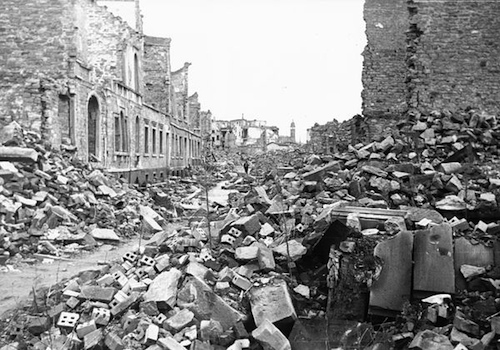
Ruins of Vicksburg. Vicksburg, an important city on the Mississippi, was bombed heavily by the Union Air Force to wreck Confederate movement over the Mississippi. Plans was put in place to attack and if needed, lay siege to the city when the war came to a close.
Map of Austria-Hungary after the First Great War
Despite being on the side of the victors, the Dual Monarchy suffered from internal unrest due to ethnic and linguistic tension. Years before the start of the Great War, it was proposed that a type "Federalized Monarchy" be established to placate the people. Sadly, this idea was abandoned after Franz Ferdinand was assassinated. However, Emperor Charles decided to reinvigorate the proposal and make it a reality. Sometime after the end of the First Great War, Austria-Hungary was eventually turned into a federation of states with semi-autonomous rule that was divided among ethnicities and languages. The Dual Monarchy was officially renamed into the "United States of Greater Austria", although it was also colloquially known as the "Austrian States", "Greater Austria", or just "Austria". While the Federated Monarchy did help ease the tension that it experienced before, it would still suffer rebellion from some groups of people that wanted full independence. Even after the Second Great War, there was an increasing desire, even among more peaceful states, for the majority of the states to be allowed to rule themselves completely without influence from the Hapsburgs. Emperor Charles, still alive decades after the end of the war in 1917, would entertain the idea of an amicable separation between the states that want independence through a plebiscite.


Source: https://en.wikipedia.org/wiki/United_States_of_Greater_Austria
Despite being on the side of the victors, the Dual Monarchy suffered from internal unrest due to ethnic and linguistic tension. Years before the start of the Great War, it was proposed that a type "Federalized Monarchy" be established to placate the people. Sadly, this idea was abandoned after Franz Ferdinand was assassinated. However, Emperor Charles decided to reinvigorate the proposal and make it a reality. Sometime after the end of the First Great War, Austria-Hungary was eventually turned into a federation of states with semi-autonomous rule that was divided among ethnicities and languages. The Dual Monarchy was officially renamed into the "United States of Greater Austria", although it was also colloquially known as the "Austrian States", "Greater Austria", or just "Austria". While the Federated Monarchy did help ease the tension that it experienced before, it would still suffer rebellion from some groups of people that wanted full independence. Even after the Second Great War, there was an increasing desire, even among more peaceful states, for the majority of the states to be allowed to rule themselves completely without influence from the Hapsburgs. Emperor Charles, still alive decades after the end of the war in 1917, would entertain the idea of an amicable separation between the states that want independence through a plebiscite.


Source: https://en.wikipedia.org/wiki/United_States_of_Greater_Austria
IOTL both the Allies and the Axis used the Bren but its possible ITTL that Britain might not be granted a license to build their own version. I suppose the Brits might develop a new MG design or continue with the Lewis Gun.I just realized: Since the Bren gun was made by the Czechs, does that mean that the Bren Gun would be used by Austria-Hungary and the Central Powers?
Maybe Britain adopts a Russian or Confederate design?
Despite being on the side of the victors, the Dual Monarchy suffered from internal unrest due to ethnic and linguistic tension. Years before the start of the Great War, it was proposed that a type "Federalized Monarchy" be established to placate the people. Sadly, this idea was abandoned after Franz Ferdinand was assassinated. However, Emperor Charles decided to reinvigorate the proposal and make it a reality. Sometime after the end of the First Great War, Austria-Hungary was eventually turned into a federation of states with semi-autonomous rule that was divided among ethnicities and languages. The Dual Monarchy was officially renamed into the "United States of Greater Austria", although it was also colloquially known as the "Austrian States", "Greater Austria", or just "Austria". While the Federated Monarchy did help ease the tension that it experienced before, it would still suffer rebellion from some groups of people that wanted full independence. Even after the Second Great War, there was an increasing desire, even among more peaceful states, for the majority of the states to be allowed to rule themselves completely without influence from the Hapsburgs. Emperor Charles, still alive decades after the end of the war in 1917, would entertain the idea of an amicable separation between the states that want independence through a plebiscite.
Source: https://en.wikipedia.org/wiki/United_States_of_Greater_Austria
I love this! These are probably your most detailed maps so far! Good detail here and I especially love the ethnic demographics map here as well. Very helpful!
Share:
